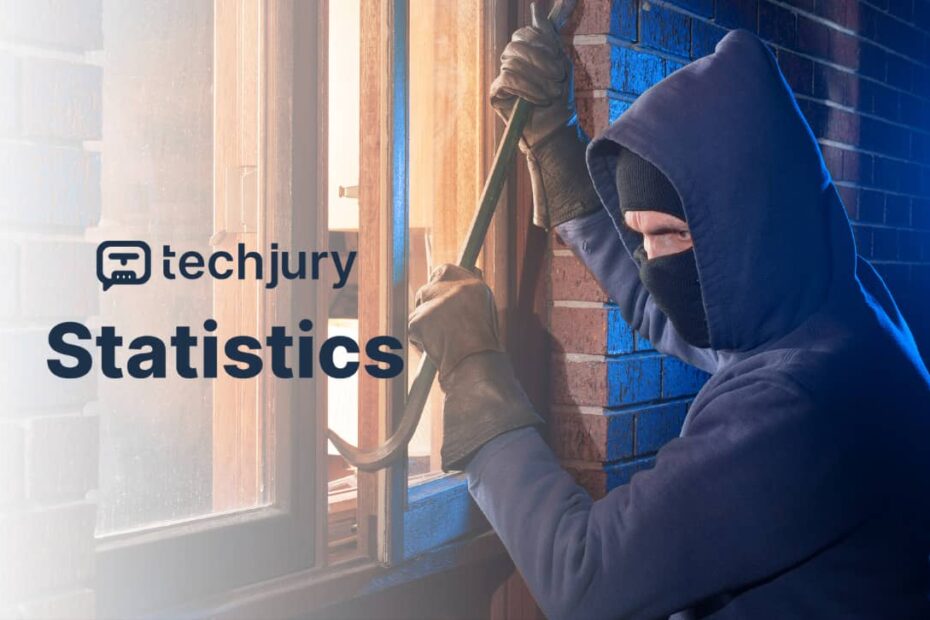Understanding the Complex Landscape of Home Invasions Through Advanced Statistical Analysis
Home security represents a critical intersection between personal safety, technological innovation, and data-driven risk management. As crime patterns evolve and technological solutions emerge, understanding the intricate dynamics of home invasions becomes increasingly sophisticated. This comprehensive analysis will explore burglary statistics through a nuanced, data-centric lens, providing homeowners and security professionals with actionable insights.
The Statistical Foundation of Home Security
Modern home security transcends traditional lock-and-key approaches. By leveraging advanced statistical analysis and machine learning techniques, we can develop more intelligent, proactive protection strategies. Our research synthesizes multiple data sources to create a holistic understanding of burglary trends, risk factors, and prevention methodologies.
Temporal Crime Pattern Analysis
Contrary to popular perception, burglaries are not random occurrences but follow predictable patterns. Detailed statistical analysis reveals fascinating insights into the temporal dynamics of home invasions. Most burglaries occur during daylight hours, specifically between 10 am and 3 pm, when residential areas experience lower occupancy rates.
This counterintuitive finding challenges conventional wisdom about nighttime criminal activities. Burglars strategically select time windows when detection risks are minimized, and potential resistance is reduced. The midday period offers criminals increased mobility, reduced suspicion, and greater operational flexibility.
Geographic and Socioeconomic Risk Factors
Our comprehensive analysis unveils intricate relationships between geographic location, socioeconomic conditions, and burglary probabilities. States like Texas demonstrate significantly higher burglary rates, with 393 incidents per 100,000 inhabitants. However, raw numbers alone fail to capture the complex underlying dynamics.
Rural states paradoxically experience higher burglary rates compared to densely populated urban environments. Factors contributing to this trend include:
- Slower law enforcement response times
- Less sophisticated security infrastructure
- More isolated residential properties
- Reduced community surveillance mechanisms
Economic Vulnerability Indicators
Household income emerges as a critical predictor of burglary risk. Counterintuitively, households with annual incomes below $7,500 face three times higher burglary probabilities compared to more affluent households. This statistical correlation reflects multiple interconnected vulnerabilities:
- Weaker physical security infrastructure
- Less sophisticated alarm systems
- Older, more accessible residential structures
- Limited resources for comprehensive protection
Technological Intervention Strategies
The emergence of smart home technologies represents a paradigm shift in home security approaches. Advanced machine learning algorithms can now predict and prevent potential security breaches with unprecedented accuracy.
Predictive Risk Modeling
By integrating multiple data sources, including historical crime statistics, neighborhood demographics, and real-time sensor information, we can develop sophisticated risk prediction models. These models generate personalized security recommendations tailored to specific residential contexts.
Economic Impact and Prevention Economics
Home invasions generate substantial economic consequences extending far beyond immediate property losses. The average burglary results in approximately $2,800 of direct financial damage. However, indirect costs—including psychological trauma, insurance premium increases, and property value depreciation—can be significantly higher.
Investment in Prevention
Statistically, homes without security systems face 300% higher burglary probabilities. Yet, fewer than 25% of residential properties implement comprehensive security technologies. This protection gap represents a critical opportunity for both homeowners and technology providers.
Emerging Technology Solutions
The future of home security lies in integrated, intelligent systems combining:
- Artificial intelligence
- Machine learning algorithms
- Internet of Things (IoT) sensors
- Advanced biometric authentication
- Real-time threat detection mechanisms
These technologies transform passive security infrastructure into dynamic, adaptive protection networks capable of anticipating and neutralizing potential threats.
Psychological and Behavioral Dimensions
Understanding criminal psychology becomes as crucial as technological intervention. Most home invasions involve individuals familiar with the property or neighborhood, highlighting the importance of comprehensive community-based security approaches.
Occupancy and Deterrence Factors
Approximately 95% of home invasions involve forceful entry, indicating that traditional deterrence methods require significant reimagination. Factors like visible security signage, strategic lighting, and community vigilance play crucial roles in prevention.
Conclusion: Toward Intelligent Security Ecosystems
Home security represents a complex, multidimensional challenge requiring holistic, data-driven solutions. By integrating advanced statistical analysis, technological innovation, and nuanced understanding of human behavior, we can create more resilient, adaptive protection strategies.
The future of home security is not about building impenetrable fortresses but developing intelligent, responsive ecosystems that anticipate and neutralize potential threats before they materialize.
Key Recommendations for Homeowners
- Implement comprehensive, technology-integrated security systems
- Understand localized risk factors
- Invest in community-based surveillance networks
- Continuously update security technologies
- Develop proactive, data-informed protection strategies
By embracing a sophisticated, analytical approach to home security, individuals can transform vulnerability into resilience, protecting what matters most.
